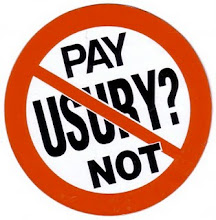The Panic Is On ...

Below is a good article by Keith Johnson re-posted from his blog - where he has many other good articles as well as links to many other relevant and informative websites.
The Panic Is On by Keith Johnson
"As the Great Depression of the 1930’s was getting underway, President Herbert Hoover refused to acknowledge it. In the weeks following the events of Black Tuesday, Hoover called the economy “fundamentally sound.” Months later, he still insisted that the strength of the American economy was “unimpaired.” However, by 1931 he could no longer hide the truth. With the economy in shambles, Hoover was forced to declare that America was indeed in a ‘depression’. He chose the word ‘depression’ because he believed it to somewhat innocuous and far less provocative than terms like ‘panics’ or ‘crises’ that had previously been used to refer to significant economic downturns.
That same semantic game is being played on us today. What we now call a ‘recession’ is what was known as a ‘depression’ back in the 1930’s. As economist John Williams explains:
“The Great Depression was one that was so severe that in the post-World War II era, those looking at economic cycles tried to come up with a euphemism for “depression.” They didn’t want to create the image of or remind people of the 1930s. Basically, they called economic downturns recessions, and most people think of a depression now as a severe recession.”(1)
The lies propagated by our government and their paid shills are perhaps their greatest crime. Deceiving the people concerning the scope and magnitude of our financial crisis denies them the opportunity to prepare for the tough days ahead. Even the word depression does not fully impress upon the people the serious predicament we now face. Perhaps its time we do remind people of the 1930’s and draw parallels between those tragic times and our current situation.
Today’s unemployment rate is fast approaching the worst levels seen since the Great Depression. The official unemployment rate (U3) released by the Bureau of Labor Statistics is currently at 9.9%. This is the number often reported by the mainstream media for public consumption but is far removed from reality.
To get closer to the real number we must consult the (U6) figure that is often touted as ‘true unemployment’. This figure adds into the equation those who fall under the contemporary definition of ‘discouraged worker’ and those who can only find ‘part-time’ work. That number puts the ‘true unemployment’ rate at 17.2%. But wait, there’s more!
Today’s definition of a discouraged worker is one who has not found work within the last year. Prior to 1994, a discouraged worker was defined as one who had not found work within the last month. That’s a big discrepancy. If we add those lost souls back into the equation, we come up with a more realistic unemployment rate of right around 22%. That’s just three clicks shy of the 25% often cited for the worst levels of the Great Depression in 1933. That 25% unemployment figure was reflective of all workers both on and off the farm.
Many economists, intent on disproving any comparison of today’s unemployment with that of the ‘Great Depression’, will often cite the non-farm unemployment figure of 34%. But it should be pointed out that during that time, 27% of America’s employed worked on the farm. Today that number is only 2%.
Unlike today, The Great Depression of the 1930’s was deflationary. The Consumer Price Index was at 17.3% when it began in 1929. By 1933 it was down to 12.6%. In other words, as the depression progressed, the cost of things dropped; what cost $1.00 in 1929 only cost 73 Cents in 1933.(2)
Not so with the depression of today. Ours is an inflationary depression that is fast becoming hyperinflationary. Hyperinflation comes when the increase in the money supply causes prices to rise so rapidly that the highest denominated bank note becomes less valuable than toilet paper. This is being facilitated by industry bailouts, unnecessary wars, foreign aid to Israel and entitlement programs that were not factors in 1933." (snip) ...
Read the complete article at this link at Keith Johnson's blog:
http://revoltoftheplebs.wordpress.com/2010/05/13/the-panic-is-on


0 Comments:
Post a Comment
<< Home